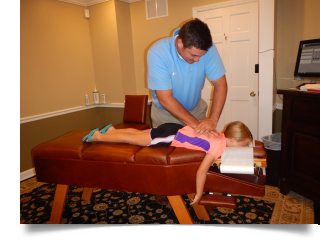 Spinal adjustment and chiropractic adjustment are terms used by chiropractors to describe their approaches to spinal manipulation, as well as some osteopaths, who use the term adjustment. Spinal adjustments were among many chiropractic techniques invented in the 19th century by Daniel David Palmer, a “magnetic healer”.
Spinal adjustment and chiropractic adjustment are terms used by chiropractors to describe their approaches to spinal manipulation, as well as some osteopaths, who use the term adjustment. Spinal adjustments were among many chiropractic techniques invented in the 19th century by Daniel David Palmer, a “magnetic healer”.
The International Chiropractor’s Association (ICA) states that the “chiropractic spinal adjustment is unique and singular to the chiropractic profession”, and that it “is characterized by a specific thrust applied to the vertebra utilizing parts of the vertebra and contiguous structures as levers to directionally correct articular malposition. Adjustment shall be differentiated from spinal manipulation in that the adjustment can only be applied to a vertebral malposition with the express intent to improve or correct the subluxation, whereas any joint, subluxated or not, may be manipulated to mobilize the joint or to put the joint through its range of motion… Chiropractic is a specialized field in the healing arts, and by prior rights, the spinal adjustment is distinct and singular to the chiropractic profession.” One author claims that this concept is now repudiated by mainstream chiropractic. The definition of this procedure describes the use of a load (force) to specific body tissues with therapeutic intent. This ‘load’ is traditionally supplied by hand, and can vary in its velocity, amplitude, duration, frequency, and body location and is usually abbreviated HVLA (high velocity low amplitude) thrust.
As the chiropractic profession grew, individual practitioners and institutions proposed and developed various proprietary techniques and methods. While many of these techniques did not endure, hundreds of different approaches remain in chiropractic practice today. Not all of them involve HVLA thrust manipulation. Most cite case studies, anecdotal evidence, and patient testimonials as evidence for effectiveness. These techniques include:
- Toggle Drop – this is when the chiropractor, using crossed hands, presses down firmly on a particular area of the spine. Then, with a quick and precise thrust, the chiropractor adjusts the spine. This is done to improve mobility in the vertebral joints.
- Lumbar Roll (aka side posture) – the chiropractor positions the patient on his or her side, then applies a quick and precise manipulative thrust to the misaligned vertebra, returning it to its proper position.
- Release Work – the chiropractor applies gentle pressure using his or her fingertips to separate the vertebrae.
- Table adjustments – The patient lies on a special table with sections that drop down. The chiropractor applies a quick thrust at the same time the section drops. The dropping of the table allows for a lighter adjustment without the twisting positions that can accompany other techniques.
- Instrument adjustments – often the gentlest methods of adjusting the spine. The patient lies on the table face down while the chiropractor uses a spring-loaded activator instrument to perform the adjustment. This technique is often used to perform adjustments on animals as well.
- Manipulation under anesthesia (MUA) – this is performed by a chiropractor certified in this technique in a hospital outpatient setting when the patient is unresponsive to traditional adjustments.
